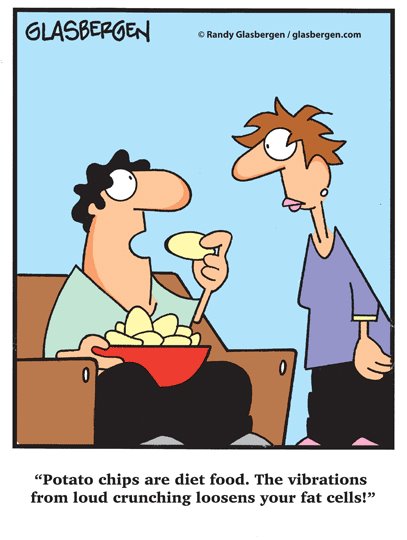I’m not going to lie, I’ve dabbled a little in weight loss products. OK, I just lied. I’ve dabbled a lot. It’s not that I don’t work out – I actually go to the gym several times a week – I just like yummy, not so healthy food. And just to prove my point, I’m writing this as I munch on a lumberjack breakfast of bacon and pancakes. I didn’t put maple syrup on any of it, so there.
Weight loss commercials like to make light of the tendency to gain weight during the holidays. I particularly like that commercial for Special K where a woman is bending over tending to the fireplace wearing a red robe. She’s suddenly inspired to eat the healthier cereal after her young daughter mistakes her rounded, red-robed body for Santa Claus’.
It probably won’t come as a surprise that a lot of women don’t like their body – but the extremes that some are willing to go to lose weight may be a bit shocking according to the latest research we conducted. Of the 1,252 women in our study, 62% don’t like their body; yet only 39% of them exercise regularly, and often resort to other means to drop the weight. Data from our Diet & Weight Loss Test reveals that only 6% of women in our sample are happy with their body, with another 32% being only moderately content. Of the remaining 62% who are unhappy, 1% are underweight, 20% are at a normal/healthy weight, 42% are overweight, and 31% are obese. So what other methods are they using to lose weight? Here’s what our stats show:
- 15% use diuretics (12% of those who are content with their body use them)
- 21% use laxatives (19% of those who are content with their body use them)
- 20% force themselves to vomit (16% of those who are content with their body use them)
- 37% use herbal weight loss supplements (18% of those who are content with their body use them)
- 37% use fat burners or diet pills (19% of those who are content with their body use them)
- 44% resort to fasting/starving themselves (29% of those who are content with their body do so) – this one really shocked me.
While these statistics alone are worrisome, we can better understand why this is the case when we look at how the personality of these two groups of women differs. Women who are unhappy with their body are also more likely to be dealing with a host of other psychological issues. Here’s what our data shows:
Unhappy women…
- Have a more external locus of control. They feel they have some, but not complete control over their health (66 vs. 76 for happy women, on a scale from 0 to 100).
- Are less likely/willing to adhere to a healthy diet & exercise program (55 vs. 72).
- Are less self-disciplined (41 vs. 61).
- Are less proactive (54 vs. 69).
- Are less self-motivated (53 vs. 63).
- Are less likely to believe in themselves and in their ability to change (57 vs. 74).
- Are less skilled at managing anger (53 vs. 67).
- Have a low tolerance for frustration (44 vs. 59).
- Are more likely to be emotional eaters (56 vs. 35).
- Have lower self-esteem (56 vs. 75).
- Are less emotionally healthy (47 vs. 66).
- Have underdeveloped or unhealthy coping skills (53 vs. 69).
- Have a higher tendency toward food guilt, i.e. feeling extreme guilt when after eating unhealthy food (61 vs. 32).
In terms of unhealthy eating habits, women who are unhappy with their body are more likely to:
- “Graze,” i.e. nibble when not hungry or eat mindlessly (60 vs. 39).
- Eat a large meal late at night (36 vs. 28).
- Snack at night (40 vs. 32).
- Use food as a reward (31 vs. 25).
- Use food as a source of comfort (58 vs. 41).
- Binge eat (58 vs. 32).
Lumberjack breakfast aside, I am very knowledgeable about healthy food and a skilled and avid researcher. Here are some tips that have helped me:
Calories in, calories out.
As simple as it may sound, the bottom line is that weight gain is a result of an imbalance of caloric input and output. Basically, if you eat more than your body burns, you will gain weight. You need to burn more calories than you eat, whether it’s changing your food habits, or exercising more. And be wary of the “next big thing,” like a new-fangled diet or pill – the side effects can be alarming (I’m pretty sure some of the fat burners I was on allowed me to see into other dimensions). Stick to what works – eat healthy and exercise.
Stock up on healthy food.
According to a study by London researchers, the difference between emotional eaters and non-emotional eaters isn’t the quantity of food they eat – it’s the quality. Emotional eaters are more likely to eat fattening, high-calorie food. So change your grocery shopping habits and make it easier to comply with your regimen by removing unhealthy temptations and replacing them with healthier ones. Now, I’m not going to patronize you here and counsel you to replace your yummy fries for celery sticks because they taste just as delicious. That’s just total and complete BS. But, there are healthier options. For example, if you have a chocolate craving, stick to dark chocolate. Replace salty chips with air-popped popcorn or even baked chips. When you’re at the grocery store, indulge the foodie in you with high-quality food with interesting flavors. Treat your taste buds to seaweed snacks, walnuts, sorbet, dried fruit (pineapple is AWESOME), apple slices with peanut butter, avocados, and kale (Wash it, dry it as much as you can, add a little salt and extra virgin olive oil then stick it in the oven for about 20 minutes. Super crunchy, super yummy).
Don’t completely give up your favorite foods.
Just eat them less often. This doesn’t mean spending an entire day binging on your beloved chocolate cake, or having nothing but fast food. It means eating healthy most of the time, and allowing a moderate indulgence for one meal. Weight loss author Tom Venuto recommends a “90/10 compliance rule,” where 90% of your meals are healthy, and the remaining 10% are your “free meals” (rather than “cheat meals”).
Learn to identify when you are really hungry.
One critical component to ending a cycle of emotional eating is re-learning to recognize your body’s signals for hunger and satiety. This is something I’ve struggled with. Emotional eaters no longer have the ability to recognize the difference between the biological need for food and the emotional need. Remember, just because it’s noon and everyone is taking their lunch, it doesn’t mean you have to eat according to that schedule! Eat when you’re moderately hungry (not starving), and pay conscious attention to satiety signals. It takes 15 minutes for the brain to get the message that you are full, so slow down. Prepare multiple courses (they don’t have to be elaborate; a small salad or soup before the main meal and a little bit of cheese after can do the trick), rest between courses, take smaller bites, and chew more. Eat until you’re 80% full, and wait 15 minutes. If you’re still a little hungry, eat a small snack.
Eat your calories, don’t drink them.
Two oranges will be more satisfying than a small glass of orange juice, and will offer the additional benefit of fiber. Beware of soft drinks, and don’t be fooled by artificially sweetened ones. Studies show that artificial sweeteners increase cravings for sugar. In fact, several studies demonstrated that drinking artificially sweetened beverages results in weight gain. If you must sweeten your beverages, go for Xylitol (sugar alcohol that tastes great and has many health benefits), honey, or coconut sugar.
Remember, exercise does not need to be extreme.
The sweat-inducing, high intensity type of exercise is what often discourages people from keeping it up. The bottom line is, the best exercise routine is one that you’ll stick to. So if you find that you need to drag yourself to the gym or your treadmill at home, it’s time for a change in your routine. There are many exercise options that are fun and can help you stay fit, like swimming, dancing (pole-dancing…need I say more?), spinning, kickboxing, nature walks, and step classes. You can also look into the latest advances in interactive video games. And remember, start small. Begin with 20 minutes a day, 3 times a week, and then add a day and 10 additional minutes every 2 weeks.
Set reasonable goals.
If you aim too high (e.g. planning to lose more than 2 pounds a week), you are setting yourself up for failure and that can be very de-motivating. Focus on getting into shape and leading a healthy lifestyle rather than judging your progress by the number you see on the scale. Keep in mind that muscles weigh more than fat, so you might be losing inches and replacing fat with muscle tissue without much change on the scale.
Insightfully yours,
Queen *munch munch* D



